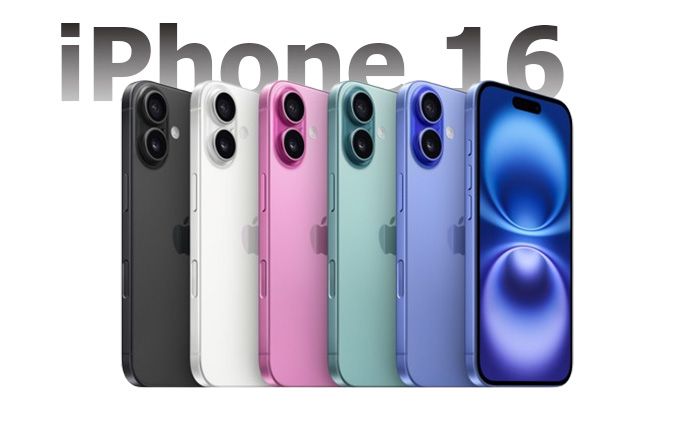The iPhone 16 is Apple’s latest flagship, bringing several impressive upgrades, but not without a few shortcomings. Let’s dive into what it gets right and where it still lags.

Design and Display: Sleeker, Brighter, and Bigger
Apple has subtly refined the design with the iPhone 16, offering a larger 6.9-inch Super Retina XDR OLED display. The screen-to-body ratio is even better, making the phone look modern and immersive. The Ceramic Shield glass remains, but the body is now encased in a titanium frame for enhanced durability. With up to 2050 nits of brightness, the iPhone 16 Pro models shine even under direct sunlight, making outdoor use more practical.
However, despite these refinements, some may argue that the design changes are minor and don’t represent a revolutionary leap. While the titanium frame is stronger and lighter, it’s not something that drastically changes the everyday user experience.
Performance: A18 Pro Chip Powering the Future
One of the standout improvements is the new A18 Pro chip, which delivers faster speeds and more efficient energy consumption. The 3nm architecture allows the iPhone 16 to handle complex tasks like gaming, video editing, and AI-powered processes with ease. Multitasking is smoother than ever, and the phone runs significantly cooler even under heavy usage.
That said, while the A18 chip is undoubtedly powerful, many users will not notice the drastic differences in day-to-day tasks compared to its predecessor, the A17. The improvements are there, but mostly in demanding applications, making it feel like a premium upgrade only for power users.
Camera System: Enhanced Features, Familiar Setup
Apple has significantly improved the camera on the iPhone 16 series. The 48MP triple-lens setup now includes advanced telephoto zoom with 5x optical zoom, making it easier to take clear, detailed shots from a distance. The low-light capabilities have also been enhanced, with Night Mode now sharper and more natural.
However, some users may feel that the overall camera experience hasn’t evolved as dramatically as expected. While the improvements are appreciated, those coming from the iPhone 14 or 15 may not notice an immediate, massive difference in everyday photography.
Battery Life: Good, but Not Game-Changing
Apple has extended the battery life on the iPhone 16, offering up to 24 hours of regular use, thanks to the more efficient A18 chip. The fast-charging feature allows you to charge up to 50% in 30 minutes, which remains a convenient addition.
But despite the more efficient processor, the battery capacity hasn’t seen a huge upgrade. Heavy users may still need to charge by the end of the day, especially with extensive use of high-performance apps, video recording, or gaming.
iOS 18: Smarter and More Intuitive
The iPhone 16 comes preloaded with iOS 18, which introduces several new features. From enhanced widgets and better privacy tools to AI-driven suggestions, the software feels smarter and more personalized than ever before. Apple’s continued push toward privacy and security makes iOS 18 one of the safest operating systems available.
Where iOS 18 falls short is that many of its new features—such as widget enhancements or privacy updates—are available on previous iPhones too. While iOS 18 feels polished, it’s not exclusive enough to make a huge difference for iPhone 16 users versus those on older models.
Colors: Aesthetic Appeal with Fresh Choices
The iPhone 16 lineup introduces new, elegant color options, including Black Titanium, White Titanium, Natural Titanium, and Blue Titanium. These colors offer a polished, premium feel that aligns with Apple’s signature design ethos.
While these new shades are stunning, the color options are fairly muted compared to some Android competitors, which offer a broader range of bold, eye-catching colors.
Conclusion: Is the iPhone 16 Worth the Upgrade?
The iPhone 16 brings meaningful upgrades in design, performance, and photography while maintaining Apple’s reputation for durability and elegance. The A18 Pro chip ensures future-proofing, while the enhanced camera features and iOS 18 offer a better overall user experience. However, those with recent models like the iPhone 15 may find the improvements less transformative than expected, making this an essential buy mostly for those upgrading from older phones.
In summary, the iPhone 16 is an impressive, refined device, but it may feel like more of a luxury for power users than a must-have for everyone.
Also Check:
- Why I Buy the iPhone 16 Anyway Despite the Mixed Opinions
- I Held a Fake Pair of AirPods Max, and the Difference Was Surprisingly Obvious—Here’s…
- ATYME 32-inch HD LED TV Review: A Budget-Friendly Display for Casual Viewers
- These Enhanced Features Make This VIZIO 40-Inch Smart TV a Solid Deal for Just…
- How to Tell if Airpods Max are Fake: I tested the real AirPods Max,…
